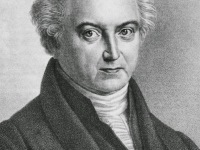Johann Elert Bode and the Titius-Bode Law
On November 23, 1826, German astronomer Johann Elert Bode passed away. Bode is best known for his popularization of the Titius-Bode‘s law, a hypothesis that the bodies in some orbital systems, including the Sun‘s, orbit at semi-major axes in a function of planetary sequence. The formula suggests that, extending outward, each planet would be approximately twice as far from the Sun as the one before. Early Years Johann Elert Bode was born…
Read more






